The place is, in a word, cryptic. This is not just because of the cathedral’s vast undercroft and the tales its stones could tell about the strange murder of an archbishop in the late 12th century. There’s a sense of the city’s riddlesome quality even before arriving.
One of the two railway stations, Canterbury West, is no further to the west than the other one, Canterbury East. What’s more, Canterbury West is situated right at the north of the town, while Canterbury East is right at the south. Once inside the old walls, middle England does its best to assert stability in the Kent peninsula, but don’t be taken in; this is the eternal capital of medieval murder mystery.
Canterbury East is the better of the two approaches, with the train slowing parallel with the largely restored mass of the Roman walls, then drawing up like a docking liner. So durable were these walls, with a thickness of two-and-a-half metres, that they offered stout resistance to the Viking invasions of Kent between the ninth and 11th centuries.
The station has a strategically sited pedestrian exit which carries the walker clean over the city’s ring road at Pin Hill and sets them down close to the castle and the old burial site of Dane John Mound. Understandably upstaged through the centuries by its ecclesiastical rival in the centre of town, the castle is nonetheless a daunting thug of a thing, even in its dotage. It started to become redundant back in the 13th century, with the establishment of the even mightier defences down the road in Dover.
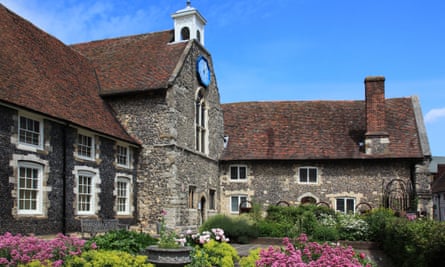
Go west into Castle Row, across Castle Street into Rosemary Lane, then right into Stour Street, a fine little straight-and-narrow valley of town houses bearing north towards the glories of St Peter’s Street and the town’s all-upstaging middle. Before leaving Stour Street, take in the Canterbury Heritage Museum, housed in the medieval Poor Priests Hospital. The place belies its sober name with some astonishing exhibits: a silver Saxon portable sundial; a whodunit display on the life and still-perplexing death of Canterbury-born playwright and early Shakespeare rival Christopher Marlowe; a three-wall tapestry depicting the life-story and, yes, death-story of Thomas Becket.
Of course, this last death has lain, literally, at the heart of Canterbury’s biography for more than 800 years. Go down Hawk’s Lane, immediately opposite the Poor Priests Hospital, all the way to the end, left into St Margaret’s Street, and there, a few yards up on the left, is the building devoted to Chaucer’s Canterbury Tales.

It’s a reminder that in coming to this most essential of England’s historic towns, the pedestrian follows in the footsteps of not one fabled journey but two. First was that of the four knights come to do, as they thought, Henry II’s bidding by bumping off his “turbulent priest”, Archbishop Becket, after a long stand-off between the two former friends about the lines of jurisdiction between the Crown and the Church. Two hundred years later, roughly along what today’s ramblers call the North Downs Way (and motorists call the M2), came Geoffrey Chaucer’s pilgrims, bound for Becket’s shrine and taking it in turns to entertain their companions with yarns of their own.
Do we have a patron saint of pedestrians? A seventh-century bishop, Chad of Mercia, is sometimes cited for his alleged refusal to ride a horse, but shouldn’t we be looking at Geoffrey of Canterbury, albeit he is not a saint, if only for modernity’s sake?
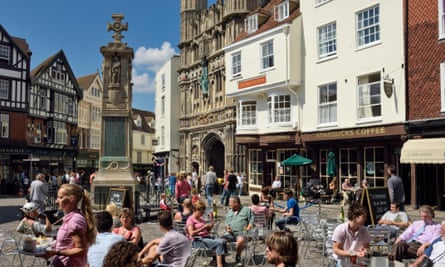
At the top of St Margaret’s Street, carry on across the High Street and straight into Mercery Lane. Fifty yards on is The Old Buttermarket, with Burgate to the right, Sun Street to the left and the precincts of the cathedral tantalisingly visible through the arch of the formidable gatehouse. If the kingdom boasts a finer confluence of medieval thoroughfares than this, it has been keeping very quiet about it this past millennium.
This is a historic superhub, with some heroically awful protest minstrels assailing the tourists’ ears around the war memorial and some modern mendicants doing slightly better business by keeping their mouths closed. Appearances in such a movie-star of a marketplace can be deceptive. It was christened Buttermarket a mere two centuries ago to replace the not so nice name of Bullstake, which came from the use of dogs to bait bulls in order to make their meat more tender.
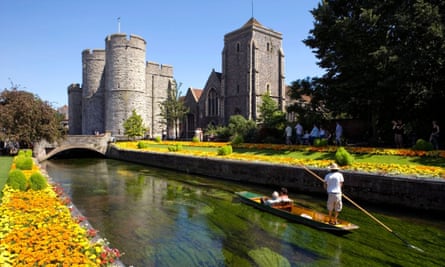
Although now within touching distance of the cathedral, defer this pleasure a little while longer by heading up Sun Street which, as it tends north, turns into Palace Street, then The Borough, then Northgate. The route then goes through the area called The King’s Mile, which bleeds away with surprising speed from classic Canterbury into a domain of tattoo parlours, vaping stores and CD racks at six for a pound. Survivors from an archaic technology. Then there’s a serious roundabout on the A28, with a big Sainsbury’s, coach park and leisure centre along Kingsmead Road to the left. Twenty-first century urban pilgrims shouldn’t expect rolling verdure and spiritual uplift all the way. Undaunted, take this road for 300 yards where, just after the next roundabout, take a footpath to the left and walk along the bank of the eastern fork of the Great Stour. This is a beautiful hush at the city’s edge, the overhanging trees mirrored in the river’s surface and, beneath, the reeds drawn in the current like Ophelia’s hair.
Head over St Radigund’s Road into Mill Lane, right into King Street, left into Orange Street, which comes out into Sun Street a few yards from the archway of Christ Church Gate. By almost every angle the towers of the cathedral above the town centre’s rooftops will have been viewed, but still nothing prepares the visitor for the sheer bulk of the building. Here is a vast moored craft rigged with airborne stone, the mothership of England’s ecclesiastical fleet; also the site of an assassination whose drama gripped the nation eight-and-a-half centuries ago and has never really let go since then.

In its architecture, as in its position in the Anglican hierarchy, it is second to none, no disrespect to the later and more unified majesty of St Paul’s. To gaze up at the intricate fan vaulting on the ceiling of its central tower, Bell Harry, is to court the mild hallucination of inverted vertigo. In height and spirit, this is a world away from the sombre area of the north-west transept, known bluntly as The Martyrdom.
Here is the doorway through which the four soldiers came on 29 December 1170 and murdered the troublesome Becket. Here is the spot where he lay dying from the wounds gorily described by a watching monk, Edward Grim. There is some strange intimacy that lingers in this area, which no doubt comes from the knowledge of what happened, so very unceremonial, inglorious, deeply personal. Much has altered, but it is still possible to see evidence of the old layout, the underside remnants of a stone staircase leading up.
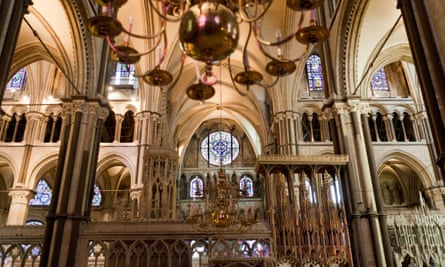
The building keeps disclosing fresh vistas – the choir almost as large as the nave, the Trinity Chapel beyond it to the east, the crypt undershadowing everything, its ceiling dramatically low like the canopy of a stone-pillared forest. Add to this the great Cloister and the Chapter House, where the Benedictine monks assembled daily, and the cathedral seems to become a church of many churches. It was in the Chapter House that the first performance of TS Eliot’s Murder in the Cathedral was given, in June 1935.
Drama has continued. Nearly 70 years later, Edward Woodward played God in a revival of cycles of the medieval Mystery Plays. Daniel McPherson from Neighbours and The Bill played Jesus, and the performances roamed through the spaces of the cathedral with a huge local cast. “Greatest story ever told,” said the producer.
Why “Mystery”? Some say the word is used in the sense of miracle. This would be very Canterbury, given the many miraculous events reported by pilgrims to the shrine. Others say it’s a compression of ministerium, meaning craft, a reference to the fact that the casts were formed by members of their respective trades. Also very Canterbury, seeing as the town’s archbishop is the C of E’s most senior minister.
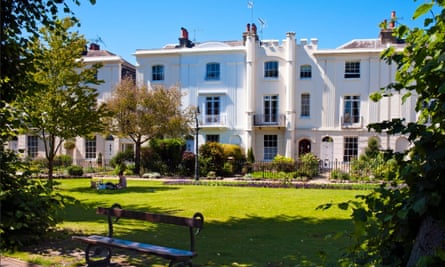
On leaving the cathedral, go left into Burgate Street, fifth right into Burgate Lane, picking up the line of the City Wall again. Head straight over St George’s Street into St George’s Lane and go right at the end into Watling Street, then left into Marlowe Avenue/St Mary’s Street. Take the left into Castle Row, then left again into Dane John Gardens for the footbridge back over Pin Hill to Canterbury East, still in the south. Which is still a mystery.
Walk length: 2.5 miles
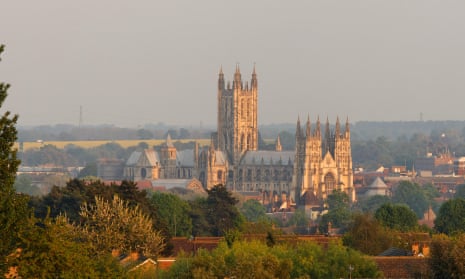


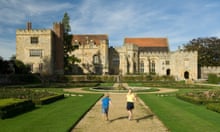


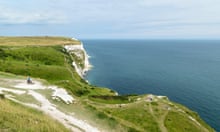

Comments (…)
Sign in or create your Guardian account to join the discussion